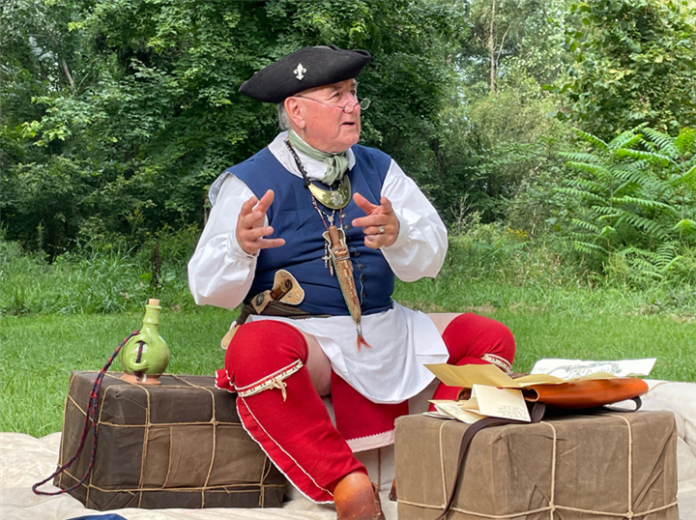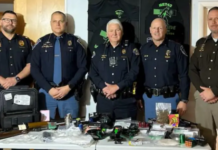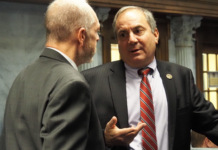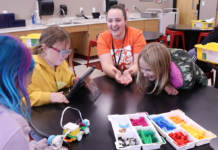SYRACUSE – Chautauqua-Wawasee and Syracuse-Wawasee Historical Museum joined together to offer three programs exploring local history for the period from the 1780s to the 1880s.
The programs were in support of Archaeology Month. All programs were free to attend, according to a news release from Chautauqua-Wawasee.
The first program, held Thursday at the Syracuse Community Center, featured Kosciusko County Surveyor Mike Kissinger, who shared his knowledge and history of how Thomas Jefferson initiated the public land survey system in 1779 and how Indiana land was mapped. Kissinger’s presentation included old maps that illustrated the general location of Native Americans, as well as other interesting facts such as the location of “forgotten” or “lost” schools and Indian trails. After his presentation, he responded to questions from attendees. As a North Webster native, Kissinger presented to an overflow audience of 55 local regional people.
Friday’s program was presented by Jim Hossler who read and shared information from Richard Stone’s Journal from the period 1827 to 1842. In April 1827, Richard Stone and his family arrived after nearly a month-long winter journey from Philadelphia and settled near the junction of what is now U.S. 33 and Ind. 5, according to the release. He and his family set up a tavern for travelers and traders to stop along their way from Fort Wayne and Goshen. Jim relayed that the mail carrier took three weeks for the round trip between Goshen and Fort Wayne. Hossler shared stories about that period including one about Thanksgiving; it was typically celebrated as four days, not just one. He recounted Interactions with local native Americans as well. The presentation was followed with a vibrant question and answer session. Approximately 49 people attended.
Saturday’s outdoor program was held at Wawasee Area Conservancy Foundation. Six different exhibits and activities included:
• Joe Zdziebko, dressed as a 1750s French Marine, told stories of weapons, furs, maps and old sayings that are still used today.
• Michelle Edington and Alex Valentine were on hand examining old artifact that people brought to ask help identifying.
• Dan Lima, seated on the ground surrounded by historical artifacts, told many stories including how the cultural differences between Native Americans who were hunters, and white settlers who were farmers, created communication issues and conflict.
• Mike Hudson, dressed as a pioneer settler, relayed information about pioneer life in 1825-1850.
• Jeff Mesaros demonstrated his flintknapping skills and technique.
• Museum Director Jamie Clemons demonstrated a tool called “atlatl” which uses leverage to achieve greater velocity in dart or spear-throwing. Many attendees tried their hand using the tool to throw spears. No injuries were reported, according to the release.
This was the fourth year for this program which seeks to share historical and archaeological information of the Syracuse/Wawasee region. Last year featured Notre Dame professor Dr. Mark Schurr and Dr. Jeff Pyle, who presented the Bartol collection.
Planning is underway for next year’s programs; it is set to run from Aug. 31 to Sept. 2, 2023.





